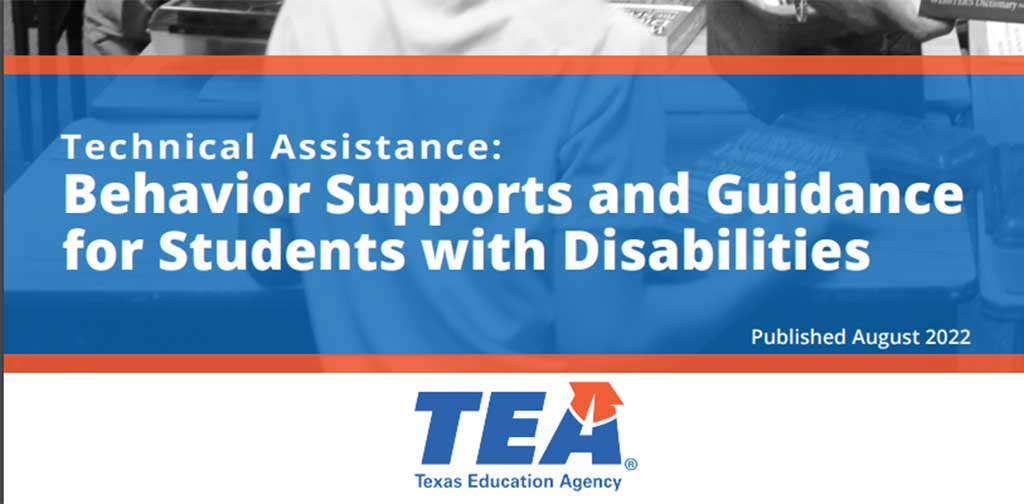When a child with an Individualized Education Program (IEP) has challenging behaviors in school that are not improving, parents may request a re-evaluation to more closely examine the behaviors of concern.
As part of that re-evaluation, a district may conduct a Functional Behavioral Assessment (FBA) to identify special education and related services and develop or modify a behavioral intervention plan.
What is an FBA?
The FBA is a structured data gathering process an IEP team uses to help identify positive behavior interventions and supports to be used in the school. An FBA is used to determine the answers to the following three questions:
- Why does the student have challenging behavior?
- What reinforces the challenging behavior?
- What positive interventions help decrease the challenging behavior and increase the desired behavior.
When is an FBA required?
Federal law requires an FBA whenever a child with a disability has an educational placement change for disciplinary reasons in the following instances:
- When a child is removed from school for more than 10 consecutive days for behavior that is a manifestation of the student’s disability.
- When a child is removed for more than 10 school days for conduct that is not a manifestation of the disability but the IEP team determines that an FBA is necessary.
- When a child is placed in an interim alternative educational setting for not more than 45 school days for behavior involving a dangerous weapon, illegal drugs or infliction of serious bodily injury.
Are there other times to develop an FBA?
When positive behavior interventions and supports are effective, your child should be making progress on the IEP goals. If he or she is not making progress, or if there are new behavioral challenges that are keeping your child from making progress, parents should think about requesting a new FBA.
You may also request an FBA if your child’s challenging behaviors interfere with other children and their ability to learn. It is always best to put your request in writing and keep a copy for yourself.
What happens next?
After receiving your written request, the IEP team would then meet, review the behavioral concerns, and determine the need for an FBA. Sometimes the IEP team wants to consider new or different positive behavioral interventions, supports, or strategies. Sometimes they may agree that it is necessary to conduct a new FBA.
Who collects data for the FBA?
The IEP team.
What are the steps in conducting an FBA?
- Identify and agree on the behavior(s) that need to change. The identification process begins with describing the challenging behaviors so that everyone understands the concern. If a child has many problem behaviors, it is important to focus on those that are the most serious.
- Determine where the behaviors do and do not occur. The team may conduct interviews, perform observations, and discuss the following questions:
- What is different about the places where the behaviors do not occur?
- What is different about the places where the problem behaviors do occur?
- Are the problem behavior(s) related to how the child responds to the teacher or peers?
- Does the number of other students present, or the difficulty of the schoolwork, cause a problem?
- Does the time of day or a child’s mood affect the behavior? Are there daily problems for the child (such as on the bus in the morning, or challenges with peers in the hallway)?
- Do the behaviors occur in a specific set of circumstances or a specific setting?
- What specific events seem to support or influence the problem behaviors?
- Collect information on the child’s performance from as many sources as possible. There may be other places to get information about the child’s challenging behaviors. That may include a review of previous assessment data, behavior incident reports, and other documented information the school has about the child’s behavior. Parents also might share information from other assessments including mental health providers. While this is good information to know, parents should be knowledgeable about how much private health information they should share.
- Develop an informed guess about why problem behaviors occur (the function of the behaviors). Using all the information gathered through observation and review of data, an idea of why the behavior occurs is stated. This helps predict where and why your child’s problem behaviors are most and least likely to occur.
- Identify behaviors that can be taught and supported within the school and that provide your child with positive alternatives to the problem behavior(s).
How do you use information from the FBA in your child’s IEP?
Children who are using negative behavior can benefit from learning new ways to act. The IEP can include goals for learning alternative, more positive ways to respond when they are frustrated, angry, or afraid. A plan for using positive behavioral interventions should also be in place as part of the IEP process for your child.
Once your child’s FBA is completed, you should find these changes made to the IEP:
- Goals that teach replacement behaviors. Children can be taught to recognize their triggers and learn new skills to use in place of the challenging behavior(s) they previously used.
- A Behavior Intervention Plan (BIP). This plan includes specific strategies for modifying the curriculum, environment, activities, or interactions with the child to prevent occurrences of the challenging behavior.
It should include positive reinforcement and supports when your child demonstrates that he or she is using the new skills in place of the challenging behavior(s).
Please note: It is important also to know that a positive Behavior Intervention Plan is NOT a plan to determine what happens to a student who violates a rule or code of conduct. That would more appropriately be called a discipline plan.
PACER Center, Inc. | ACTion Sheet: PHP-c215a | PACER.org




